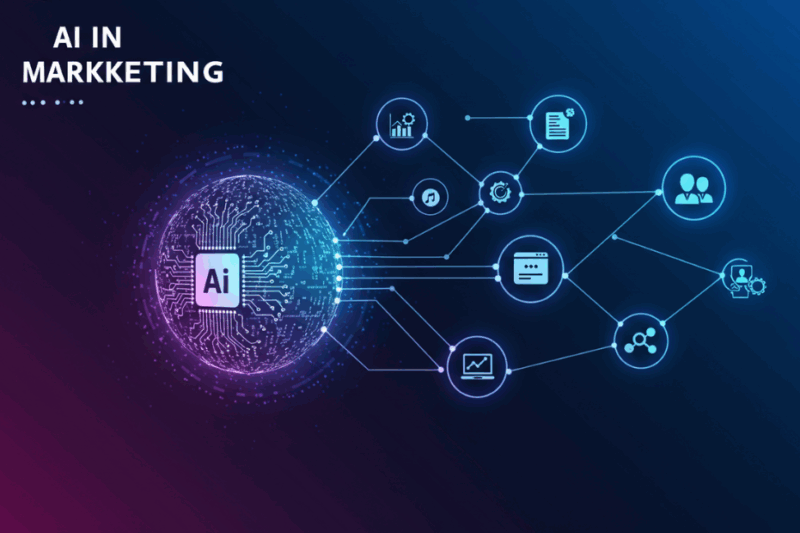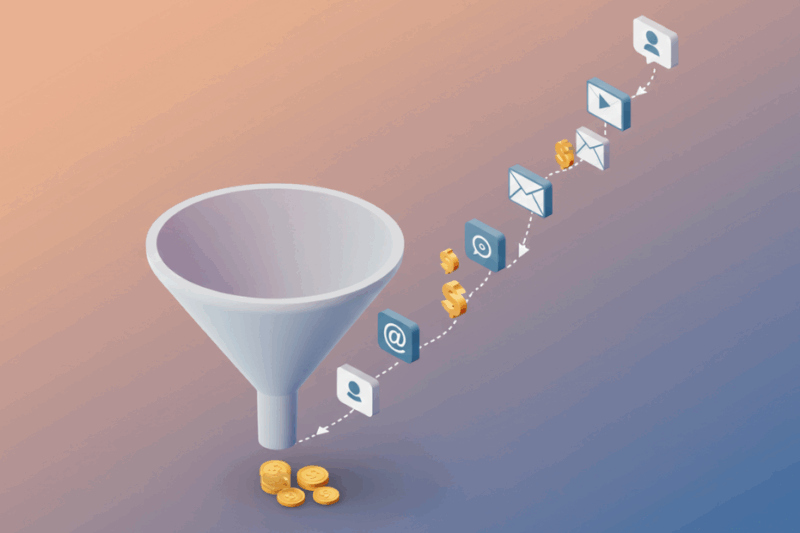In today’s digital age, marketing has evolved far beyond traditional methods like TV advertisements, billboards, and print ads. Digital marketing has emerged as a powerful tool, enabling businesses to connect with their audience in a more personalized and measurable way. But what exactly is digital marketing, and how can beginners get started? This step-by-step guide will walk you through the basics.

Understanding Digital Marketing
Digital marketing refers to the promotion of products or services using digital channels such as search engines, social media, email, websites, and mobile apps. Unlike traditional marketing, digital marketing allows businesses to reach a global audience, track results in real-time, and tailor campaigns to specific demographics.
The primary goal of digital marketing is to connect with potential customers where they spend most of their time—online. Whether it’s through engaging content, targeted ads, or interactive social media posts, digital marketing provides endless opportunities to build brand awareness and drive sales.
Why Is Digital Marketing Important?
- Global Reach: With the internet connecting billions of people worldwide, digital marketing allows businesses to expand their reach far beyond local markets.
- Cost-Effective: Compared to traditional advertising methods, digital marketing is often more affordable and provides a higher return on investment (ROI).
- Measurable Results: Tools like Google Analytics and social media insights allow marketers to track the success of their campaigns in real-time.
- Personalization: Digital marketing enables businesses to deliver tailored messages to specific target audiences based on their preferences, behavior, and demographics.
- Engagement: Platforms like social media allow for two-way communication, fostering stronger relationships between businesses and their customers.
Key Components of Digital Marketing
Digital marketing encompasses several strategies and channels. Here are the most common components:
1. Search Engine Optimization (SEO)
SEO is the process of optimizing your website to rank higher on search engine results pages (SERPs). By using relevant keywords, creating quality content, and improving website performance, businesses can attract organic traffic.
2. Pay-Per-Click Advertising (PPC)
PPC is a paid advertising model where businesses pay a fee each time someone clicks on their ad. Platforms like Google Ads and Bing Ads allow businesses to target specific keywords and audiences.
3. Content Marketing
Content marketing involves creating valuable and relevant content (blogs, videos, infographics, etc.) to attract and engage your audience. The goal is to provide information that solves problems or answers questions, building trust with potential customers.
4. Social Media Marketing
Social media platforms like Facebook, Instagram, Twitter, LinkedIn, and TikTok are powerful tools for reaching your audience. Social media marketing involves creating posts, running ads, and engaging with followers to boost brand visibility.
5. Email Marketing
Email marketing remains one of the most effective ways to nurture leads and maintain customer relationships. By sending personalized emails with promotions, updates, or valuable content, businesses can drive conversions.
6. Affiliate Marketing
Affiliate marketing involves partnering with individuals or companies who promote your products or services in exchange for a commission on sales generated through their referral links.
7. Influencer Marketing
Collaborating with influencers—individuals with a strong online following—can help businesses reach new audiences and build credibility.
8. Mobile Marketing
With more people using smartphones than ever before, mobile marketing focuses on reaching users through SMS campaigns, mobile apps, and mobile-friendly websites.
How to Get Started with Digital Marketing: A Step-by-Step Guide
If you’re new to digital marketing, the process may seem overwhelming at first. However, by following these steps, you can build a solid foundation:
Step 1: Define Your Goals
Before diving into digital marketing strategies, determine what you want to achieve. Common goals include:
- Increasing website traffic
- Generating leads
- Boosting online sales
- Building brand awareness
- Improving customer retention
Having clear objectives will guide your efforts and help you measure success.
Step 2: Identify Your Target Audience
Understanding your audience is crucial for creating effective campaigns. Consider factors like:
- Demographics (age, gender, location)
- Interests and hobbies
- Online behavior (social media usage, preferred platforms)
- Pain points and needs
The more you know about your audience, the better you can tailor your messaging.
Step 3: Build a Strong Online Presence
Your website is often the first point of contact for potential customers. Ensure it is:
- User-friendly
- Mobile-responsive
- Optimized for SEO
- Fast-loading
Additionally, create profiles on social media platforms where your target audience is most active.
Step 4: Develop a Content Strategy
Content is the backbone of digital marketing. Plan and create high-quality content that aligns with your goals and resonates with your audience. This could include blog posts, videos, infographics, eBooks, or podcasts.
Step 5: Leverage Social Media
Choose the right social media platforms based on your audience demographics. Post consistently, engage with followers, and experiment with different types of content (stories, reels, polls). Paid ads on social media can also help amplify your reach.
Step 6: Use Email Marketing
Build an email list by offering incentives like discounts or free resources in exchange for email sign-ups. Send personalized emails to nurture leads and encourage repeat business.
Step 7: Monitor and Analyze Performance
Use analytics tools to track the performance of your campaigns. Key metrics to monitor include:
- Website traffic
- Conversion rates
- Click-through rates (CTR)
- Engagement rates on social media
Analyzing data helps you identify what’s working and where improvements are needed.
Tips for Success in Digital Marketing
- Stay Updated: The digital landscape is constantly evolving. Keep up with industry trends and algorithm updates.
- Experiment: Don’t be afraid to try new strategies or platforms. Testing helps you discover what resonates with your audience.
- Focus on Quality: Whether it’s content or ads, prioritize quality over quantity.
- Engage with Your Audience: Respond to comments, messages, and reviews promptly to build trust and loyalty.
- Be Patient: Results may not happen overnight. Consistency and persistence are key.
Conclusion
Digital marketing is an essential tool for businesses of all sizes in today’s connected world. While it may seem complex at first glance, breaking it down into manageable steps can make it more approachable for beginners. By understanding your audience, setting clear goals, and leveraging the right channels, you can create impactful campaigns that drive results.
Remember that digital marketing is a journey—one that requires continuous learning and adaptation. Start small, track your progress, and refine your strategies over time. With dedication and creativity, the possibilities are endless!


